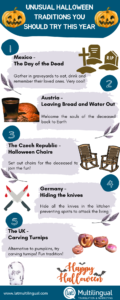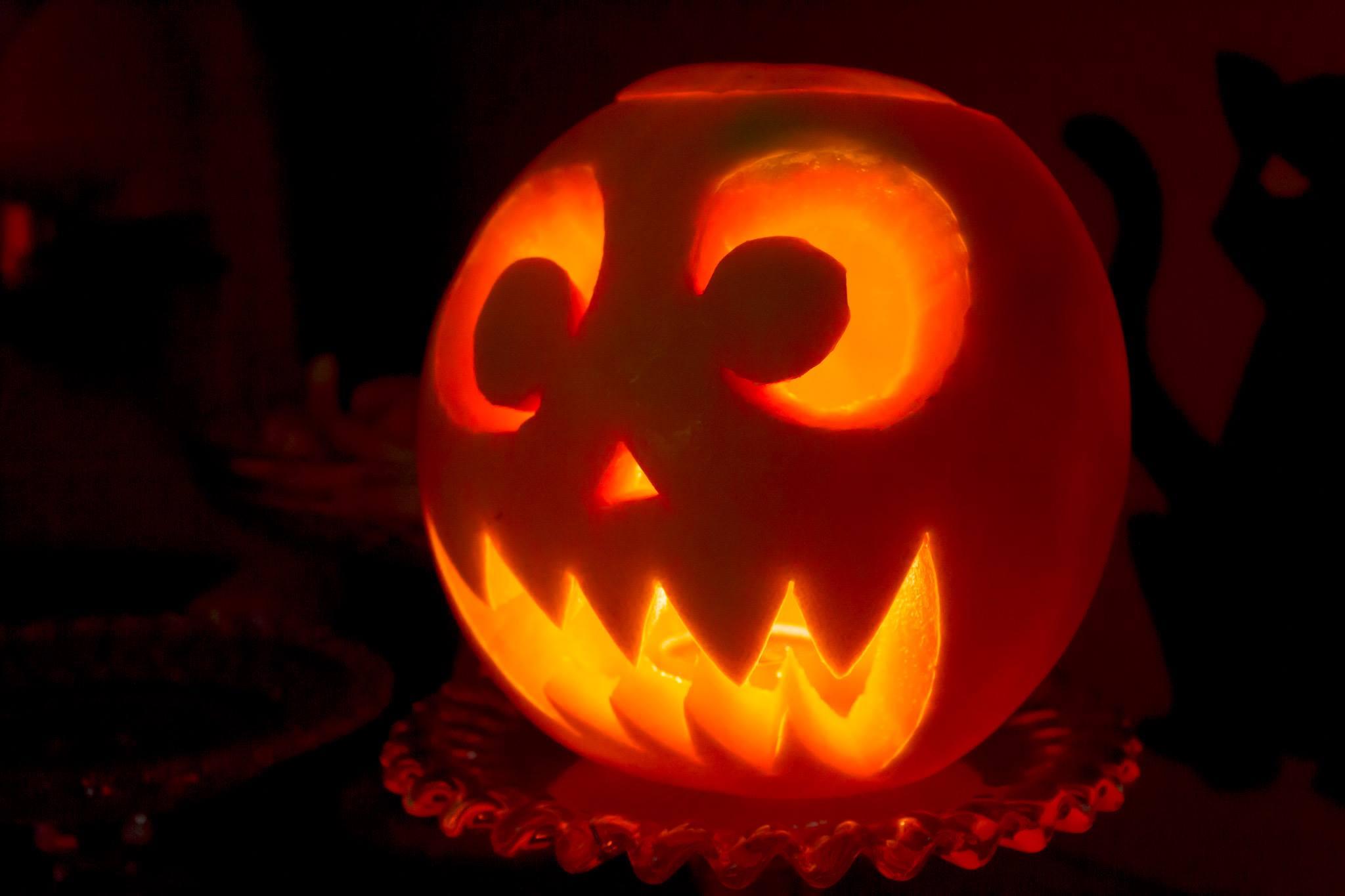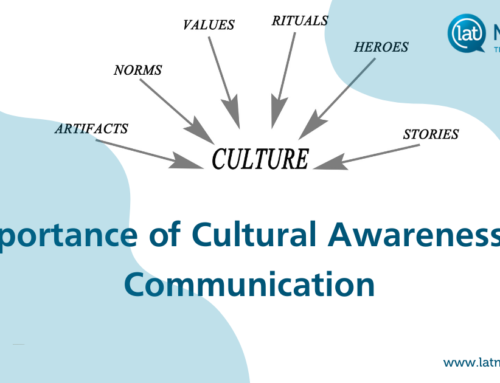Do you know the background to Halloween, celebrated on October 31st? This day marks the single night of the year when, according to old Celtic beliefs, spirits of the dead can cross over into the world of the living to take them back to the underworld. Dressing up as ghosts and ghouls is thought to ‘confuse’ these spirits so they don’t take any humans back with them!
Here’s how different cultures celebrate Halloween across the world:
Japan: Cosplay Halloween – Halloween has found its way into the hearts of the Japanese people, particularly the younger generation. Even though it’s not a traditional Japanese holiday, Halloween has become a fantastic occasion for people to unleash their creativity through costumes, parades, and lively parties. One exciting aspect is the rising popularity of cosplay, where individuals embrace their favourite characters and personas during the Halloween festivities.
France – Trick-or-treating isn’t a huge part of French tradition; there are very mixed feelings about trick-or-treaters showing up at strangers’ houses. The French prefer to celebrate La Toussaint – in honour of their deceased relatives and all the saints – on November 1. They visit special church services and place flowers on family graves.
Brazil – There aren’t many pumpkins in Brazil – last year our office manager carved a melon. Instead of making a big deal about Halloween, November 2 is a national holiday: “Dia de Finados” (All Souls Day). There is actually a big movement against Halloween in an attempt to preserve national culture.
- Our office manager’s melon-pumpkin!
- Final result
Germany – Only in certain regions or neighbourhoods do German youngsters actually go trick-or-treating (“Süßes oder Saures!”). Germany is more focused on Martinstag (St. Martin’s Day, Martinsmas) on November 11, which includes costumes and a lantern procession for children.
England – Halloween isn’t a huge deal in the United Kingdom, although it has gained in popularity over the years. We tend to focus more on November 5 which goes by many names: Guy Fawkes Night, Bonfire Night or Fireworks Night. This marks the night in 1605 when a plot to blow up the House of Lords was foiled.

Canada – Canadians celebrate Halloween by decorating houses and dressing up in spooky costumes. Canadians are estimated to spend 1 billion dollars on Halloween this year. Research from Statistics Canada reveals that across the nation, residents of Albertan are the biggest overall spenders for Halloween with an average person planning to spend nearly $200.
USA – The United States wins “Halloween fever” hands-down – with costumes and decorations appearing in shops weeks before, with spending in 2017 expected to reach a record $9.1 billion (up from $8.4 billion in 2016).
Mexico: Dia de los Muertos – In Mexico, Halloween is just the beginning of a multi-day celebration known as Dia de los Muertos, or Day of the Dead. This holiday, which combines indigenous Aztec and Catholic influences, is a time to honour and remember loved ones who have passed away. Families create colourful altars with photographs, candles, and favourite foods of the departed. The streets come alive with vibrant parades, sugar skulls, and marigold flowers, creating a festive atmosphere to remember the deceased.


Ireland: Samhain, the Ancestral Halloween – Ireland is often considered the birthplace of Halloween. The holiday originated from the Celtic festival of Samhain, which marked the end of the harvest season and the beginning of winter. Traditionally, people lit bonfires and wore costumes to ward off evil spirits. Many Irish Halloween customs, such as carving turnips into lanterns, have carried over to modern-day celebrations.
China’s Teng Chieh: The Lantern Festival – In China, Halloween isn’t a traditional event. Instead, they have a celebration known as Teng Chieh or the Lantern Festival. It occurs on the 15th day of the first lunar month. During this festival, people light up colourful lanterns and set them afloat on rivers, creating a mesmerizing scene that guides the spirits of their loved ones who have passed away. Teng Chieh is a time for families to unite and cherish the memories of their ancestors.
Philippines: Pangangaluluwa – In the Philippines, Halloween takes on a special touch through the tradition of “Pangangaluluwa.” It’s a heartwarming custom where children go from house to house, singing songs and offering prayers for the departed souls. In return for their heartfelt gestures, they are rewarded with offerings, like money or food. This custom combines Halloween festivities with a strong sense of community and spirituality.
Italy: All Saints’ Day and All Souls’ Day – While Halloween is not widely celebrated in Italy, two important holidays that share similarities are All Saints’ Day (Ognissanti) and All Souls’ Day (Giorno dei Morti). On these days, Italians visit cemeteries to honour their deceased loved ones, leaving flowers and lighting candles. It is a time of remembrance and reflection.
Halloween is a time to have some fun and get creative. It is a time to explore your creativity and get into the spooky spirit. Here are some unusual Halloween traditions that you should try this year!

Halloween is a diverse and adaptable holiday, celebrated in various ways across the world. While some countries have embraced American-style Halloween with costumes and trick-or-treating, others have integrated the holiday into their own unique customs. Whether it’s the vibrant Dia de los Muertos in Mexico, the ancient Samhain celebrations in Ireland, or the emerging cosplay culture in Japan, Halloween traditions continue to evolve and bring people together in the spirit of fun and remembrance.















